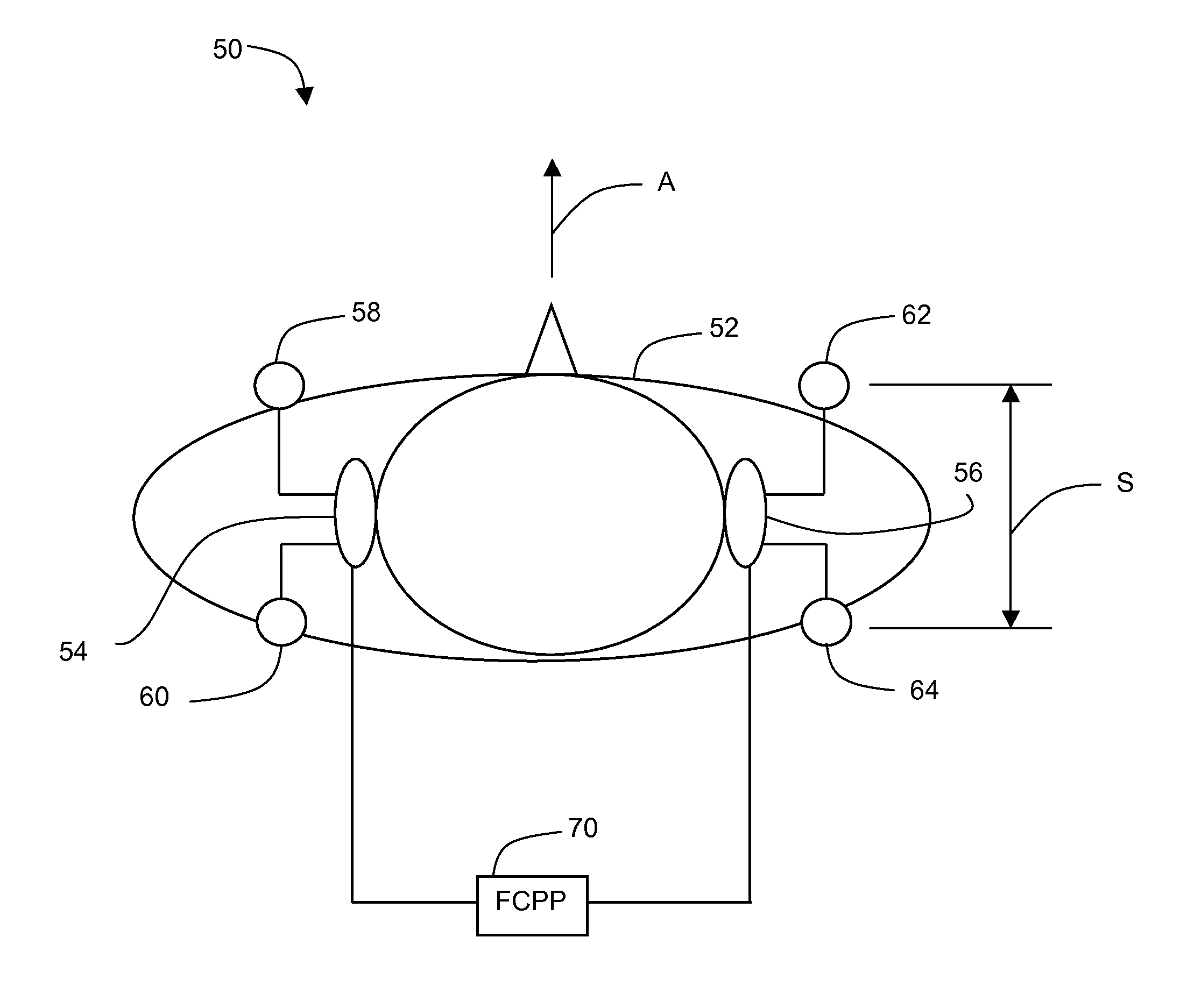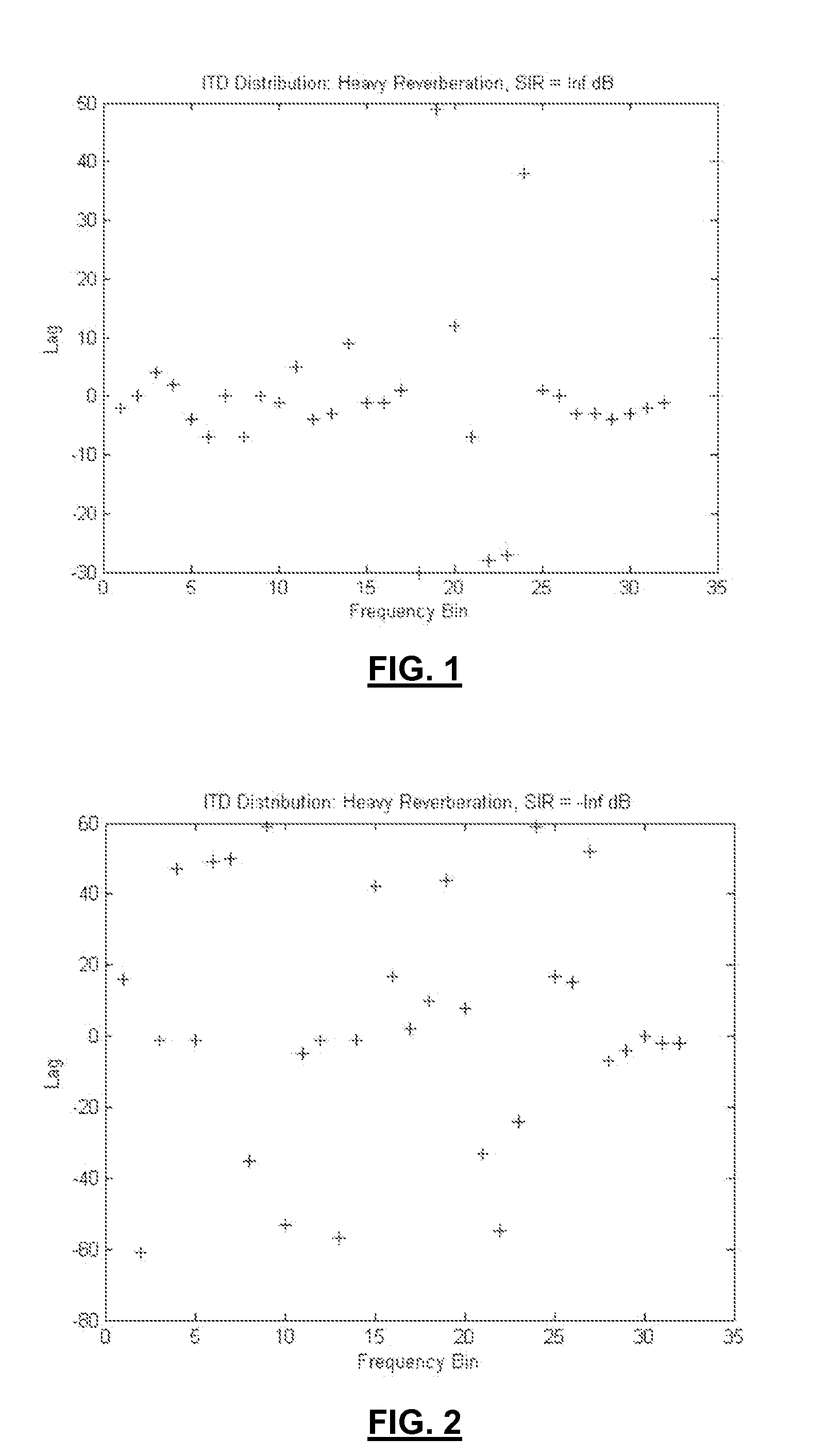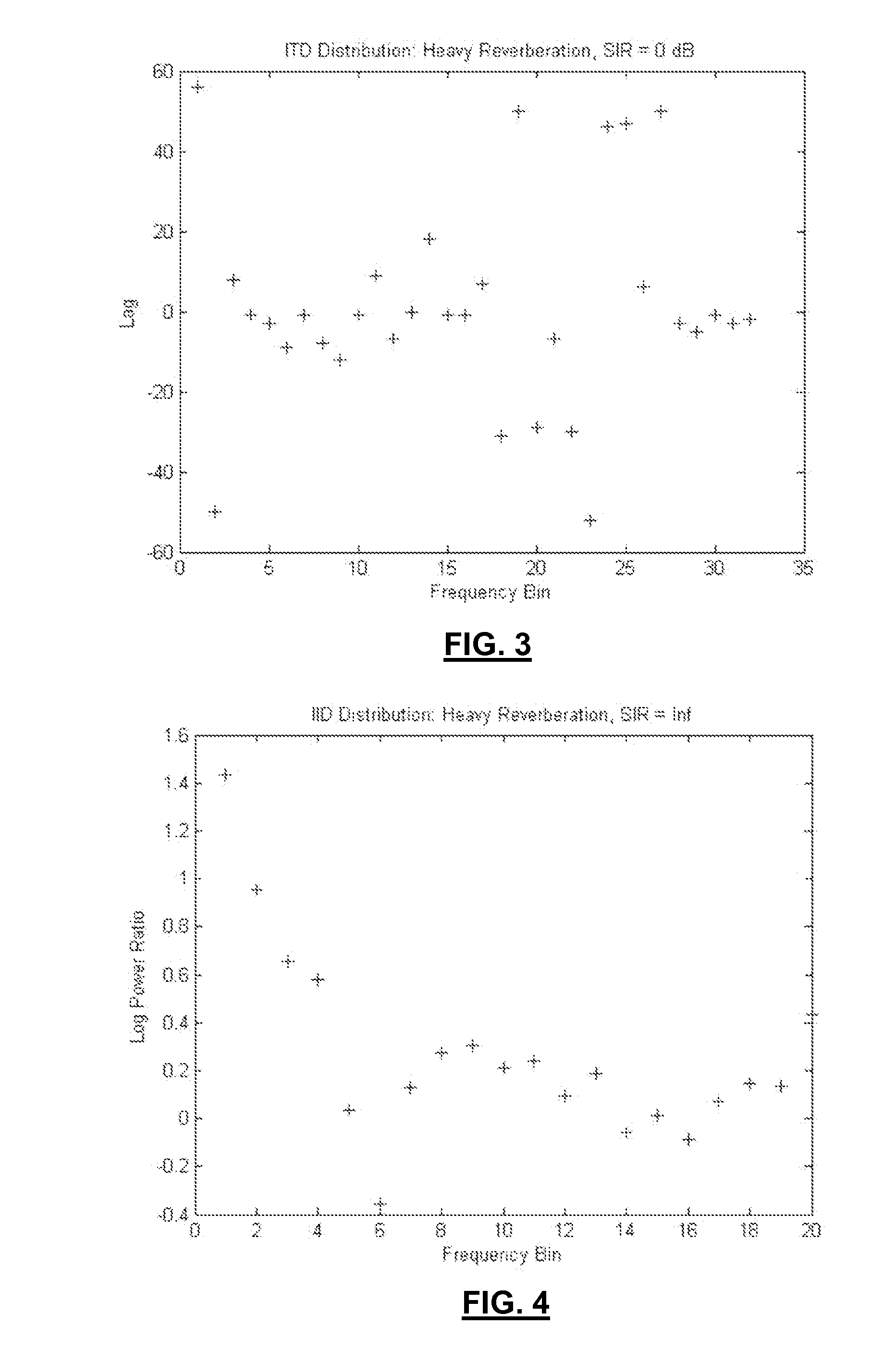Apparatus, systems and methods for binaural hearing enhancement in auditory processing systems
a binaural and processing system technology, applied in the field of auditory processing systems, can solve the problems of inability to understand speech in noise, difficulty in solving computational problems, and difficulty in speech comprehension by hearing impaired people in noisy rooms, and achieve the effect of reducing rearward directional interferen
- Summary
- Abstract
- Description
- Claims
- Application Information
AI Technical Summary
Benefits of technology
Problems solved by technology
Method used
Image
Examples
Embodiment Construction
[0008]According to one aspect, there is provided a system for binaural hearing enhancement, the system configured to receive an auditory signal including a target signal, perform time-frequency decomposition on the auditory signal, extract a plurality of auditory cues from the auditory signal, prioritize at least one of the plurality of auditory cues based on the robustness of each auditory cue, and based on the prioritized cues, extract the target signal from the auditory signal.
[0009]The system may be configured to determine cue identities using fuzzy logic, group the auditory cues based on cue priorities, calculate time-frequency weighting factors for the at least one auditory cues, calculate at least one smoothing parameter, and perform time-smoothing over time-frequency weighting factors based on the at least one smoothing parameter.
[0010]The system may be configured to reduce and / or modify rearwards directional interference using spectral subtraction weights derived from at le...
PUM
 Login to View More
Login to View More Abstract
Description
Claims
Application Information
 Login to View More
Login to View More - R&D
- Intellectual Property
- Life Sciences
- Materials
- Tech Scout
- Unparalleled Data Quality
- Higher Quality Content
- 60% Fewer Hallucinations
Browse by: Latest US Patents, China's latest patents, Technical Efficacy Thesaurus, Application Domain, Technology Topic, Popular Technical Reports.
© 2025 PatSnap. All rights reserved.Legal|Privacy policy|Modern Slavery Act Transparency Statement|Sitemap|About US| Contact US: help@patsnap.com



